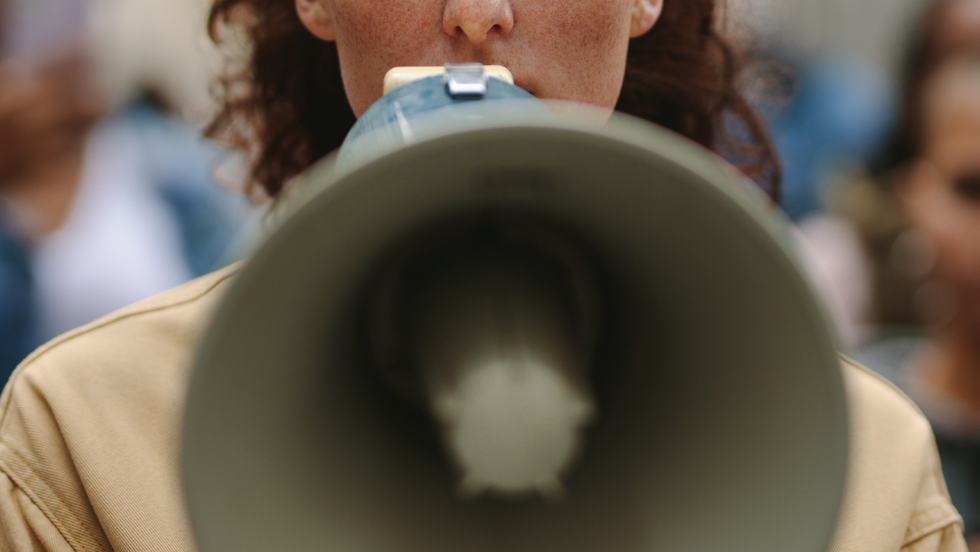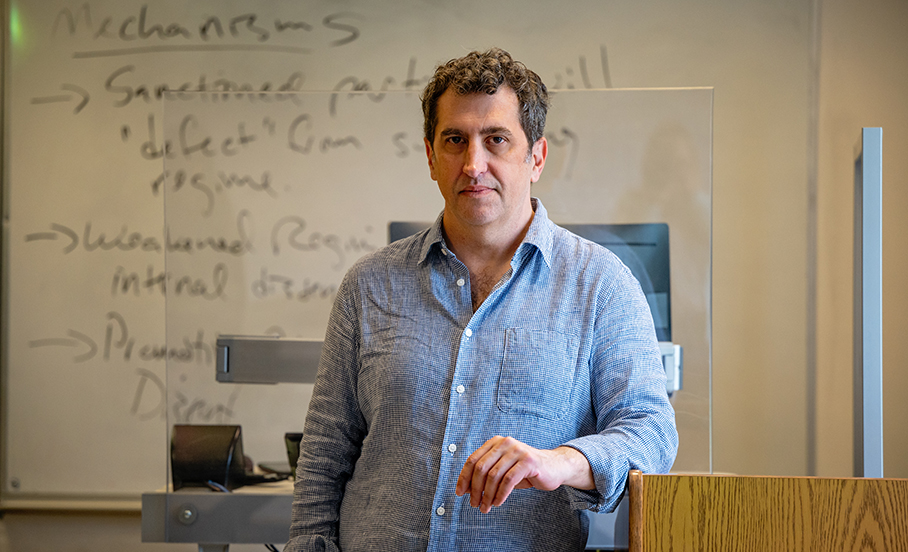
Adelphi professor's ethical framework offers a new way of thinking about culpability and provocation.
Throughout history, nonviolent protesters have been met with disproportionately violent reactions from the state—in fact, the threat of violence is so predictable that some protesters preemptively practice keeping their cool in the face of harassment from the police or military.
But for Shawn Kaplan, PhD, associate professor of philosophy and director of Adelphi’s ethics and public policy program, this inevitability poses an ethical quandary: If protesters are so confident that their actions will be met with violence, do they also bear some moral responsibility for the harm ultimately sustained?
Unfortunately, this question is one of increasing urgency. “More and more, protests are being condemned for the responses they elicit and labeled as provocations to violence,” Dr. Kaplan said. As he writes in a recent paper, “Nonviolent Protesters and Provocations to Violence,” which appeared in The Philosophy of War and Violence, a special edition of the Washington University Review of Philosophy, “provocation is a thorny concept” that can “unfairly shift culpability for the violent response.”1

Shawn Kaplan, PhD, is an associate professor of philosophy and director of the ethics and public policy program.
The paper lays out an ethical framework for examining the ethics of nonviolent protest that ends in violence, beginning with an assessment of culpability. According to Dr. Kaplan, protesters sometimes bear some blame for violence they inspire: “While it in no way negates the culpability of those who respond violently or command a violent response to the nonviolent protest, partial culpability can be assigned to the organizers or protesters if the risk of violence they create is unjustified,” he explained.
For a risk of a violent reaction to be justified, the injustice being opposed by the protesters must be grave enough to justify the risk of a violent response, and the likely benefits of the protest must outweigh the likely harms of the violent response. If protesters are facing a significant risk of harm, then only state-ordained violations of their most basic rights may provide justification for imposing such a significant risk of violence. Yet the risk of a violent response, however likely, is not by itself sufficient to establish moral culpability. “The person who stands up to a bully might foresee a violent response,” Dr. Kaplan said, “but we don’t believe they have provoked the bully in a morally important way, and we certainly don’t believe they are partially culpable for the bully’s violence. This would be victim blaming.”
Dr. Kaplan addresses another ethical question that emerges from this phenomenon: Is it morally permissible to publicize acts of disproportionate violence against protesters and bystanders in the hopes of influencing public opinion? Ordinarily, a person should not be morally permitted to take advantage of a response they have manipulated or provoked in another party. “Following this reasoning, some critics argue that, when protesters have already foreseen a violent reaction, it’s morally impermissible for them to then use images and videos of the response in a public relations or social media campaign.”
But categorically denying people’s right to disseminate such documentation is too simplistic, especially since the way a regime responds to protest can illuminate its brutality or criminality. “Protesters who create either justified or unjustified risks of violence are permitted to publicize disproportionate violent responses from their opposition, so long as this campaign has a likelihood of success for shaping public opinion,” Dr. Kaplan said.
This framework for analyzing the ethics of nonviolent protest intersects with Dr. Kaplan’s work on the incorporation of facial recognition capabilities into our video surveillance systems. In another new paper, “To be a face in the crowd: Surveillance, facial recognition, and a right to obscurity” (Everyday Life in the Culture of Surveillance, 2023), Dr. Kaplan identifies a new threat for nonviolent protesters: the loss of safety through anonymity.2 To make sure new surveillance technologies do not have a chilling effect on public protest, he argues that a new “right to obscurity” should be enshrined that prohibits the cataloging of protesters. The loss of our anonymity while in public due to facial recognition surveillance makes us “vulnerable to psychological manipulation” and undermines “the interest of liberal democracies to neither deter expressions of political dissent or conviction nor limit the diverse expressions of citizens’ diverse faith or ways of life.”
1 Kaplan, Shawn. “Nonviolent Protesters and Provocations to Violence.” Washington University Review of Philosophy: The Philosophy of War and Violence, vol. 2, 2022, pp. 170-187.
2 Kaplan, Shawn. “To be a face in the crowd: Surveillance, facial recognition, and a right to obscurity.” Everyday Life in the Culture of Surveillance, edited by Lars Samuelsson, Coppélie Cocq, Stefan Gelfgren, Jesper Enbom. Nordicom, 2023.